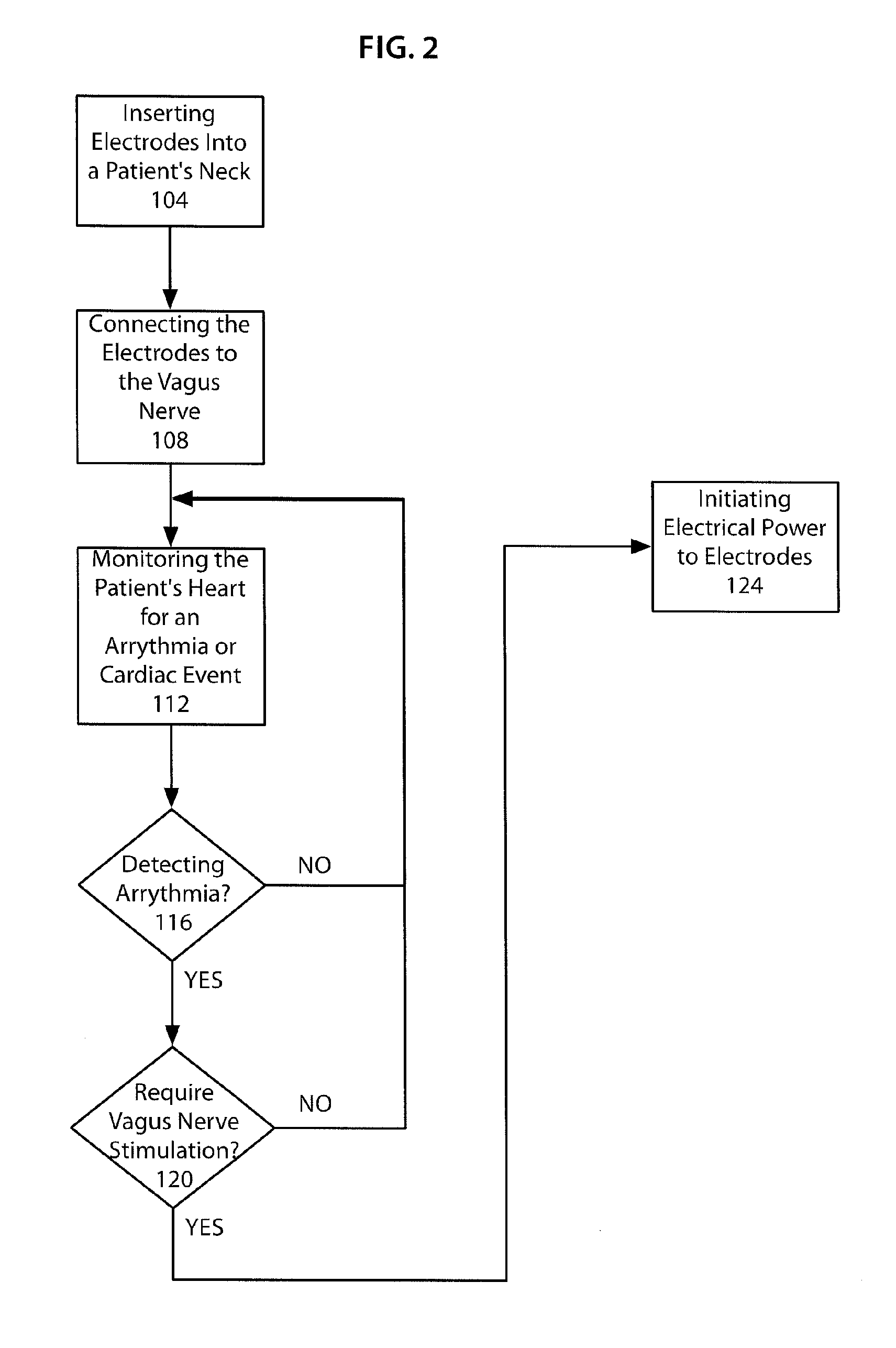Cardiac defibrillation with vagus nerve stimulation
a vagus nerve and cardiac defibrillation technology, applied in the field of vagus nerve stimulation for cardiac defibrillation, can solve the problems of causing valve damage, invasiveness of ambulatory electrical defibrillator devices which require the insertion of electrodes into the heart, and risk of implanted bleeding
- Summary
- Abstract
- Description
- Claims
- Application Information
AI Technical Summary
Benefits of technology
Problems solved by technology
Method used
Image
Examples
Embodiment Construction
[0039]Referring to FIG. 1, a system 10 for treating cardiac arrhythmias of a patient 14 includes electrodes 18 having a distal end 19 inserted into the patient's 14 neck 15. The electrodes 18 are connected at their distal end 19 to the vagus nerve 30, using connection elements 32. A controller 40 is connected to a proximal end 20 of the electrodes 18, wherein the controller 40 is connected to an electrical power source 50 for providing electricity to the electrodes 18 for electrically stimulating the vagus nerve 30. The electrical stimulation to the vagus nerve 30 is applied during a cardiac arrhythmia of the heart 16, thereby reversing the arrhythmia. The heart 16 is monitored by a cardiac monitoring device 60 for determining when cardiac arrhythmias occur. The cardiac monitoring device 60 monitors the heart using a connection 62 to the vagus nerve 30 and / or connection to the patient's chest wall in the vicinity of the controller implant. The cardiac arrhythmia or cardiac event may...
PUM
 Login to View More
Login to View More Abstract
Description
Claims
Application Information
 Login to View More
Login to View More - R&D
- Intellectual Property
- Life Sciences
- Materials
- Tech Scout
- Unparalleled Data Quality
- Higher Quality Content
- 60% Fewer Hallucinations
Browse by: Latest US Patents, China's latest patents, Technical Efficacy Thesaurus, Application Domain, Technology Topic, Popular Technical Reports.
© 2025 PatSnap. All rights reserved.Legal|Privacy policy|Modern Slavery Act Transparency Statement|Sitemap|About US| Contact US: help@patsnap.com



